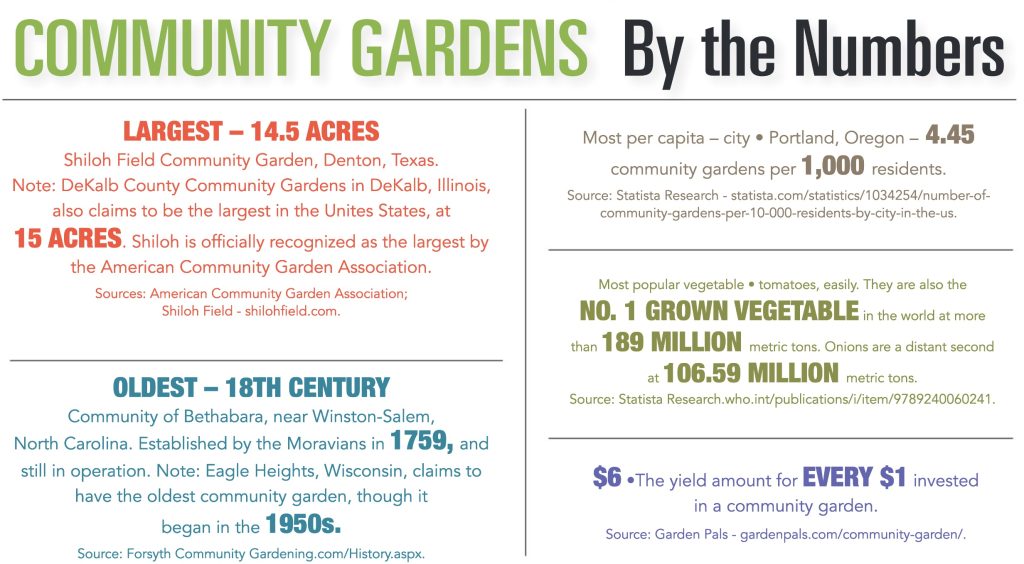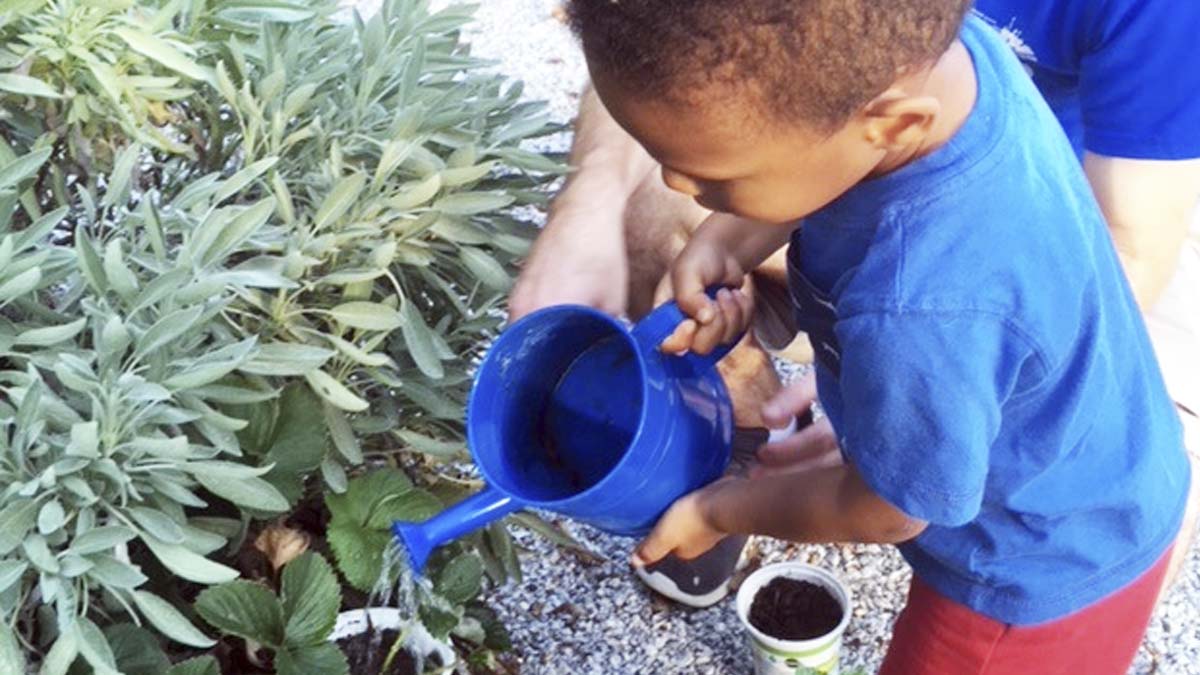They have been used to beautify vacant lots, clean up polluted environments, build stronger ties among people in neighborhoods and produce food for needy families.
But in the 274 years since the first one was established in the United States, community gardens have not only grown to impressive numbers across all 50 states – their original concept of bringing communities together for a common purpose is probably more important now than ever.
“We have at least 10 functioning community gardens in Greenville County,” said Aerin Brownlee, program coordinator with Greenville County Recreation. “And besides providing an additional recreation opportunity for our community members, there are so many other benefits that community gardens bring to any neighborhood.”
For example, gardening in general has long been recognized as a primary way to relieve stress. Brownlee pointed out that when people work a community garden, they retain a balance between work and wellness in ways that aren’t always apparent in the hustle of everyday life.
“Community gardening is something that helps us slow down, clear the head and recharge for all the things we have to do,” she said. “And, even if we don’t realize it at first, it also helps us better our surroundings in ways we are often unaware of.”
Many of these ways include:
Beautifying the landscape – Urban neighborhoods often contain vacant lots that have fallen into disuse and neglect, inviting unwanted elements to grow. A community garden in these areas creates a green, living space where birds and beneficial insects congregate. Community gardens also can increase property values.
Cleaning up the environment – Plants naturally contribute to cleaner air by adding oxygen to the air and removing air pollution. Plants also absorb rainwater, which means less runoff in streets and less pollutants washed into rivers, streams and lakes.
“The increased biodiversity and beauty also benefits the general public as our gardens were placed in spaces where previously only mowed turf was grown,” Brownlee said.
Building stronger communities – Participating in a community garden allows neighbors to personally connect and get to know each other. This means not only stronger neighborhood bonds but a tendency for criminal elements to stay away.
Better nutrition – Obtaining fresh produce is often a challenge for people and families living in urban areas.
This means dispensing with healthy and nutritious eating habits, which many of us take for granted, because the effort and distance to go to get fruit and vegetables costs too much and takes too much time. But it has been proven that the presence of a community garden changes these habits toward healthier lifestyles.
“Better nutrition is one of the biggest benefits that working a community garden can provide,” said Jacqueline Williams, program coordinator and master gardener with Columbia Parks & Recreation. “Our official program started in 2011, and now we have three area sites, all owned by the city, that residents can lease.”
Williams added that the best part for her happens when participants realize a distinct difference between what they grow and what they buy.
“Residents who participate in our community gardens program think the cabbage, tomatoes, eggplant, carrots, lettuce and all the other food from them taste better than the vegetables they get in the store,” she said. “And they also participate for other reasons, such as social interaction and limited space at home for gardens.”
Of course, better nutrition can mean far fewer medical problems later on.
“Food from one of these gardens can significantly reduce the risk of obesity and obesity-related diseases,” Brownlee said. “And most of the people who work the gardens in Greenville County grow food for personal consumption and enjoy tending their crops with families or friends.”
Community gardens made their debut in Colonial America when members of the Moravian Church in North Carolina established them to provide food for the entire community. Later, in the 1890s, Detroit was the first city to start community gardens on vacant lots to hep combat an economic recession. And during World War II, the U.S. Department of Agriculture encouraged Americans to plant what were known as victory gardens. Around one-third of the vegetables produced during this time came from these gardens.
Today, the largest community garden in the United States, Shiloh Field, situated on 14.5 acres in Denton, Texas, has produced more than 340,000 pounds of produce in the last 13 years to feed people who otherwise would go hungry.
It’s an idea, and a challenge, that Williams said is being explored on a smaller scale for the Columbia area.
“The first challenge we have is ‘Who is going to work the gardens exclusively for the benefit of others,’” she said. “And the second challenge is ‘How can we utilize these gardens to benefit our farmers markets and mobile markets and our food banks?’”

By L. C. Leach III







